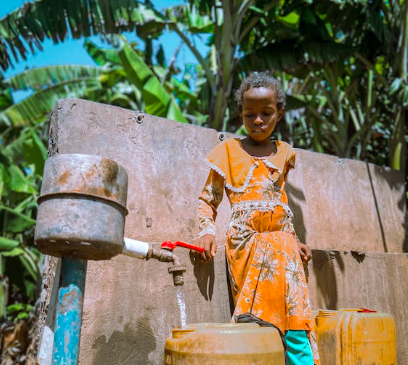Cape Town – Water scarcity is a complex issue in Africa, and various regions across the continent face challenges related to limited access to clean and sufficient water.
It’s important to note that the impact of water scarcity can vary within countries, and local factors such as population density, climate conditions, and water management practices play a crucial role.
Efforts to address water scarcity often involve a combination of conservation measures, sustainable practices, and regional cooperation to ensure equitable access to water resources.
According to the United Nations, a country is deemed to be water stressed when its total renewable freshwater resources range between 1 000 cubic meters and 1 700 cubic metres per person per year.
Here are some regions that are particularly affected by water scarcity:
North Africa:
Countries in the northern part of Africa, such as Egypt, Libya, Algeria, Tunisia, and Morocco, often experience water scarcity due to their arid and semi-arid climates.
The availability of freshwater resources in these regions is limited, leading to challenges in meeting the water demand for agriculture, industry, and growing populations.
The World Resources Institute labels Libya, for example, as suffering extreme water stress, while Tunisia, Algeria, and Morocco are considered to be under high water stress, and Mauritania faces medium to high water stress.
The water scarcity in this region has been exacerbated by rapid population increases associated with multiple factors, including rising income levels and growing urbanisation.
According to World Bank data from 2018, North Africa is largely comprised of water-scarce nations, with an average of less than 1,000 cubic meters of renewable fresh water per person per year
Sub-Saharan Africa:
Sub-Saharan Africa encompasses a vast and diverse region with varying levels of water scarcity. Counties in the Sahel region, including Chad, Niger, Mali Burkina Faso, often face water stress due to erratic rainfall patterns and desertification.
Additionally, countries in the Horn of Africa, such as Somalia, Ethiopia and Kenya are prone to droughts, impacting water availability.
The number of people without access to water is growing in Sub-Saharan Africa, a report by World Banks says.
It is the only region of the world where this is happening.
About 387 million people lived without access to basic drinking water services in Sub-Saharan Africa in 2020, up from 350 million people in 2000, according to a WHO/ UNICEF progress report.
Southern Africa:
Several countries in Southern Africa, including South Africa, Namibia, Botswana, parts of Mozambique and Zimbabwe, experience water scarcity issues.
Factors such as population growth, climate variability, and competition for water resources contribute to challenges in maintaining water security in this region.
According to Greenpeace, South Africa has insufficient and unreliable rainfall. The country receives a mean annual precipitation of 497mm/year, almost 50% less than the global average of 860mm/year. This water scarcity also presents in the way water resources are distributed in the country.
“Water is a very unevenly distributed resource meaning that millions of South Africans already drink water that was captured in reservoirs in excess of 400km away.
“The country and its government try to solve this water insecurity problem by engineering dams and ‘importing’ water through inter-basin transfer schemes.
‘This means that the looming water emergency should be considered a key issue as without water a large section of South African society would be at risk.
“The term “water crisis” is often used to describe the lack of water access throughout the world and the resulting consequences,” the report says.
East Africa:
East African countries like Tanzania, Uganda, an parts of Kenya face water scarcity challenges, particularly in areas with high population density.
Uneven distribution of water resources, deforestation, and pollution contribute to the strain on water availability in these regions.
As of October 2022, at least 226 million people in Eastern and Southern Africa did not have access to basic water services, and 381 million people lacked access to basic sanitation services, a report by World Bank said.
“The situation is worse in rural areas than in cities. And nine countries (Angola, Democratic Republic of Congo, Ethiopia, Kenya, Madagascar, Mozambique, Sudan, Tanzania, and Uganda) are home to 80% of underserved people in the region,” the report said.
It added: “Addressing people’s need for water and sanitation in these nine countries and continuing to make progress in other parts of the region is key to improving people’s lives and boost economic growth.”
West Africa:
Some West African countries such as Nigeria, Ghana, and Senegal, grapple with water scarcity issues, especially in urban centres where population growth and inadequate infrastructure strain water resources.
Additionally, the Sahara Desert’s encroachment poses challenges in countries like Mali and Niger.
Over 60% of countries in West Africa will be facing water scarcity by 2025 while almost 80% of surface waters are facing eutrophication, according to EHP Publishing.
Research results have shown that water contamination is a serious problem for both rural and urban populations, the report said.
“West Africa’s access rates to safe water are among the lowest in the world and climate change may drastically exacerbate these challenges in the future.”
Follow African Insider on Facebook, Twitter and Instagram
Picture: Pexels
For more African news, visit Africaninsider.com
Compiled by Betha Madhomu


